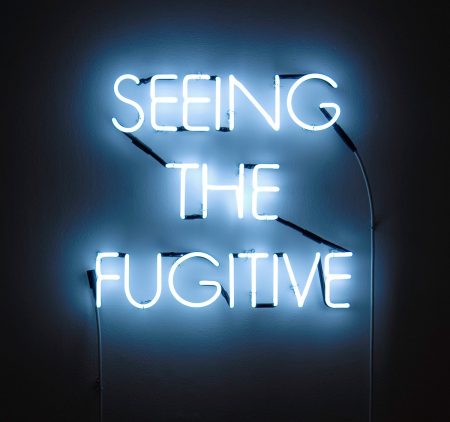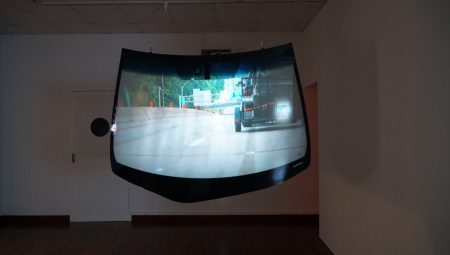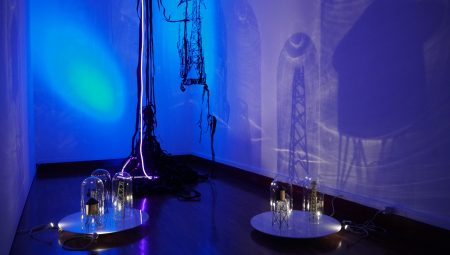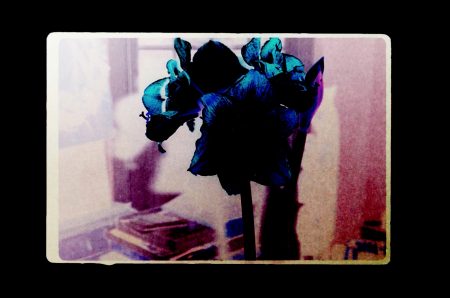Through October 10-13, the city will roll out the massive, citywide light-based art spectacle BLINK for the second time after a successful first go around in 2017. The outdoor festival, however, isn’t the only attraction that people should gravitate toward to view interesting light-based work. It’s perhaps appropriate that the smaller exhibition, “Emanate,” is featured at the Weston Art Gallery. The Weston is located in the Aronoff Center for the Arts, which is – as Cincinnatians know well – one of the city’s cultural centers. With that knowledge, the Weston’s press release states that, “’Emanate’ is a group exhibition designed to coincide with the Cincinnati BLINK Festival featuring light-based works that include phosphorescent painting, neon sculpture, illuminated photography, video, and projection.”
By organizing the exhibition to coincide with BLINK, the Gallery is utilizing an opportunity to catch overlapping audiences. In doing so, they may receive some visitors perhaps unfamiliar with the gallery experience. They promote this cultural center that works hard to bring the center arts year round. The exhibition’s pairing with the festival also gives visitors the opportunity to see some light-based work that they won’t see anything like throughout the cityscape. The work ranges from more traditional pieces like Tom Bacher’s painting of the Cincinnati skyline to abstract installations by Nate Ricciuto, Lindsay Deifik and Alice Pixley Young. Notably, much of the work is by regional artists who, like the gallery, are here year round. The show also includes compelling work by artists based outside the region including Anthony Luensman.
As visitors enter the gallery and walk downstairs toward the main doors they’ll enter a small room containing a few introductory pieces. Two pieces by Suzanne Silver (an internationally exhibited artist and professor at Ohio State University) might appeal to the audiences by using shaped neon lights, a form that’s gained some popularity in recent years. On one wall the lights spell the succinct text, “Seeing the Fugitive,” and across from that lights in the shape of a chair.

Suzanne Silver, “Seeing the Fugitive,” 2008, Neon (Manufactured by City Lights Neon, Cincinnati, OH) 24” x 28” x 2”
The chair, puzzingly, sits in front of a television broadcasting video of feet wearing what appear to be makeshift shoes. In this footage titled “The Line Maker,” the feet move forward and backward as the video plays, stops, and plays backwards. On the wall to the left of the two hangs a piece by C. Jacqueline Wood called “Modern Hybrids.” Wood, director of the Mini Microcinema and local video artist, presents a “psychedelic video-scape” consisting of photographic slides shot by her grandfather documenting flowers grown by her grandmother. The piece transmits an immediate feeling of nostalgia, both personal and cultural, recalling imagery from the seventies.
Though light may be the primary theme emanating from the pieces displayed in the exhibition, it also feels like the artists are all in some way wrestling with the relationship between time and human creation; a theme that pairs well with BLINK. If one thinks of the combination of the historic city architecture illuminated by modern technology, it might be read as a festival that demonstrates a historic city moving toward a new future. In this case perhaps it’s one in which the old survives and combines with the new to produce something bright. Some of the pieces in “Emanate,” like Wood’s, connect directly with the past. Some of them, like Silver’s “The Line Maker,” and Liz Roberts’ “Always Nowhere Drops its Body,” portray – and manipulate – the passing of time directly.
The Roberts piece presents a video projection of footage taken on a dash cam driving across Ohio. The exhibitions program notes that the footage works to “contort time while pointing out mundane moments of interest along the way.” It might also inspire feelings of nostalgia in the visitor. We might watch the moments falling away, images of interest passing into the background. Through the lens of the low quality dash video familiar landscapes pass, leaving viewers to question just how familiar the landscapes actually are. The piece is uniquely projected on an actual hanging windshield, inviting viewers deeper into its fading reality.

Liz Roberts, “Always Nowhere Drops its Body,” 2019,
Windshield, spray paint, hardware, video projection
40” x 57”
Sarah Knobel, a visitor from Potsdam, NY, presents two pieces of crisp color photographs illuminated from behind by light boxes. One, simply titled “Bag #1,” makes vivid use of bright colors and hints at the lingering presence of wasted objects as time passes. Across the room, however, “Foil #6,” generates a wholly different aura. Like it’s counterpart, it hints at the anthropocentric human contributions toward the wearing down of the natural world as we see a lone, looming piece of foil in the middle of dark woods. The light from behind the image begins in the middle, as a glowing, purple shape illuminates the forest. Unlike “Bag #1” the foil appears as mystical as it does mysterious. The deep purple light contrasts with the natural landscape, yet the hue broods with the dark greens and browns of the forest. The lingering foil takes on a more sinister aura than the floating bag.

Sarah Knobel, “Foil # 6 (Recoil Series),” 2018,
Inkjet pigment print on DisplayTrans, light box,
26” x 50” x 5 ½”
Deeper into the gallery space the viewer encounters “The Forest,” by Christian Schmit (another local based out of Lakeside Park, KY). Atop a tall table, disjointed rows of tall lamps (actually only reaching about a foot above the table surface) loom over a tiny desk. The surface of the table is covered in tiny pieces of blank paper strewn among the bases of the lamps. At the time of my visit only one of the lamps was illuminated. The piece evokes absurdity and paranoia. The desk and the sheets of paper recall the all too common feeling that accompanies our human failures to make progress. The lights – which must inevitably turn off – evoke the anxiety that accompanies those failures and the impossibility of getting back lost time that has passed. Each part of the piece on top of the table is, remarkably, constructed from paper and cardboard, two materials perhaps as fragile as wasted time.
Finally, a back room leads to Alice Pixley Young’s fascinating installation “Transmissions.” At the beginning of the installation two towers, roughly a foot tall, sit encapsulated by glass casings. The black structures look like cell phone towers each accompanied by LED lights that cast their shadows onto the walls. Behind the towers looms a deluge of cut strips of paper. The strips are attached to the ceiling near the doorway, strewn across the ceiling, and flow onto the ground from one point. A section of the cut paper resembles the tower that it hangs behind, though this one in particular appears to be in a state of decay. Young’s is another piece that curiously evokes reflection on the relationship between time and human construction. In this one the future might be decay.

Alice Pixley Young, “Transmissions,” 2019,
Roofing paper, wood, motorized turntables, acrylic, glass,
LED lights, and shadows,
10’ x 7’ 4” x 19’ 6” room dimensions
The themes pervade BLINK, and are expressed through a fascinating variety of styles in “Emanate.” The overarching use of light serves to illuminate this complicated relationship. “Emanate,” though perhaps at times more abstract than what anyone might see at BLINK, reaches out to just as many audiences to explore these ideas. Different forms invite different reflections on light, time, human construction and art.
–Josh Beckelhimer





